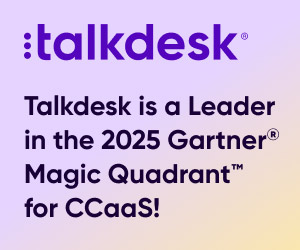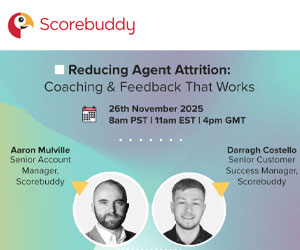For decades, Customer Satisfaction (CSAT) has been treated as a scoreboard – a simple number meant to summarize how customers feel. Yet behind the percentage lies a deep flaw: surveys are incomplete, biased, and detached from reality.
Traditional feedback methods capture only a fraction of experiences, forcing customers into rating boxes while ignoring the texture of real conversations.
With response rates below 5%, most CSAT data reflects only the loudest voices – the extremely happy or deeply frustrated – leaving the “silent majority” invisible.
Enter AI. Large language models (LLMs) can now interpret natural language, analyze full transcripts, and infer satisfaction across 100% of interactions. This shift doesn’t just modernize the metric – it redefines what customer satisfaction means.
The Problem with Surveys: Low Response, High Bias
Surveys were built for convenience, not accuracy. The fixed-choice structure simplifies analysis but distorts reality. Customers abandon long forms, skip optional questions, and select random ratings just to move on.
Bias compounds the issue. Negativity bias ensures that bad experiences speak louder. Acquiescence bias pushes neutral customers to “agree.”
Together, these flaws create a distorted view of service quality — one where only extremes are visible and mediocrity is invisible.
The outcome? Businesses optimize around edge cases while missing the broader opportunity to improve consistency and empathy across the board.
How AI Transforms Feedback Analysis
AI breaks the mold by analyzing real interactions – not survey abstractions. With LLMs, businesses can evaluate tone, sentiment, and outcome directly from chat or voice transcripts.
Instead of asking how satisfied were you, AI can observe satisfaction through language. Platforms achieve up to 99.8% accuracy in interpreting conversation quality.
Every interaction is scored, categorized, and ready for action – transforming feedback from episodic surveys into a living system of continuous learning.
From 5% Response to 100% Coverage
The math is staggering. Traditional CSAT surveys sample roughly 1 in 20 interactions. AI CSAT analyzes every single one.
That means no blind spots, no cherry-picked feedback, and no lag between performance and insight. It’s a 20x data gain that finally exposes the middle – the routine, “fine but fixable” moments that actually define most brand experiences.
With this kind of visibility, organizations can slice performance across agents, time, product lines, or regions – and make precise improvements rather than broad guesses.
Why AI CSAT Scores Differ — and Why That’s a Good Thing
AI-generated satisfaction scores often deviate from survey results. That’s not an error – it’s reality. Because AI includes every interaction, it pulls averages toward the true centre.
In some cases, scores rise because AI reveals that customers are happier than surveys suggest (less negativity bias). In others, they drop because AI captures friction that surveys miss. Either way, the outcome is a more truthful baseline – one that leaders can finally trust for strategic decisions.
From Numbers to Levers: Making CSAT Actionable
The biggest breakthrough isn’t the score itself – it’s what you can do with it.
AI turns satisfaction from a static number into a dynamic lens. Teams can compare performance by inquiry type (e.g., shipping vs. returns), identify patterns in “bottom 20%” interactions, and trigger targeted training or product fixes.
It’s a shift from measurement to management – from knowing how you did to understanding why, and what to improve next.
The End of the Survey Era
Incumbent vendors like Qualtrics still advocate hybrid approaches – surveys supported by AI – but these add friction without meaningful gain. Emerging AI-native platforms prove that full automation is not only possible but preferable.
When every conversation can be scored, categorized, and improved upon automatically, the days of survey fatigue and vanity metrics are numbered.
Conclusion: AI as the Bridge Between Satisfaction and Strategy
AI doesn’t just measure happiness – it explains it. It sees what customers say, how they say it, and what that means for the business.
By covering 100% of interactions, AI-driven CSAT converts feedback into fuel for growth. It connects insights to actions and turns satisfaction into a strategic advantage.
The shift is already underway. Businesses that cling to surveys risk falling behind. Those that embrace AI are discovering what satisfaction really looks like – and how it drives every other metric that matters.
Crescendo helps enterprises modernize customer experience with AI-powered insight and 99.8% accurate automation.
Discover how AI CSAT can help your business see every customer, every time.
With thanks to Tod Famous, Crescendo Chief Product Officer.
For more information about Crescendo - visit the Crescendo Website
Author: Tod Famous
Reviewed by: Jo Robinson
Published On: 29th Oct 2025 - Last modified: 4th Nov 2025
Read more about - Expert Insights, Artificial Intelligence (AI), Crescendo, Customer Experience (CX), Customer Satisfaction (CSAT), Generative AI, Tod Famous






 Crescendo is the first AI-native contact center built to deliver peak CX performance in the AI era. While others sell seats, licenses, or hype, we tie our success to business outcomes.
Crescendo is the first AI-native contact center built to deliver peak CX performance in the AI era. While others sell seats, licenses, or hype, we tie our success to business outcomes. 






























